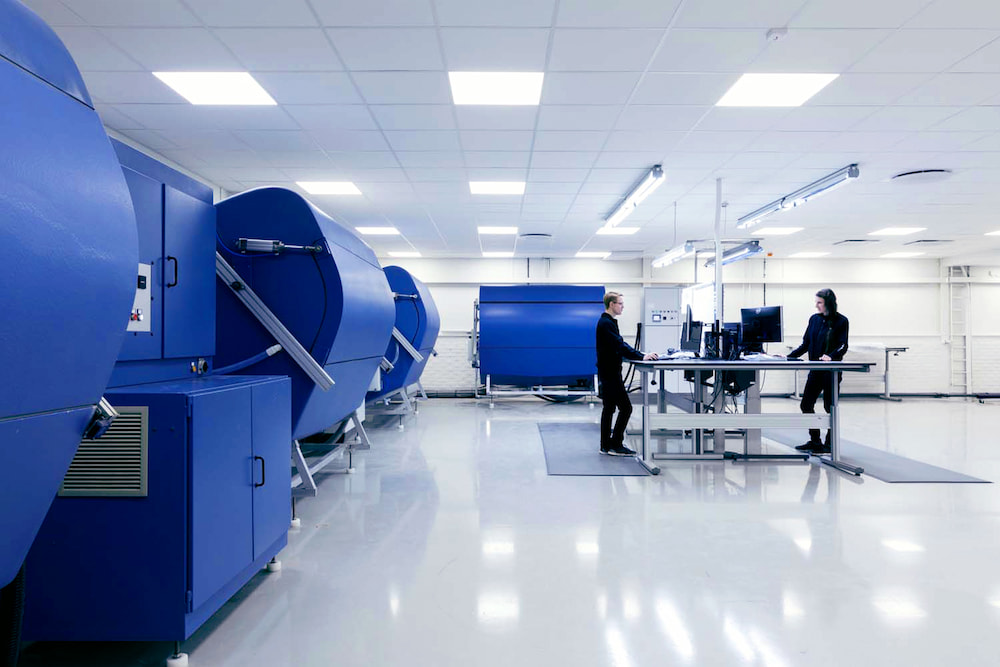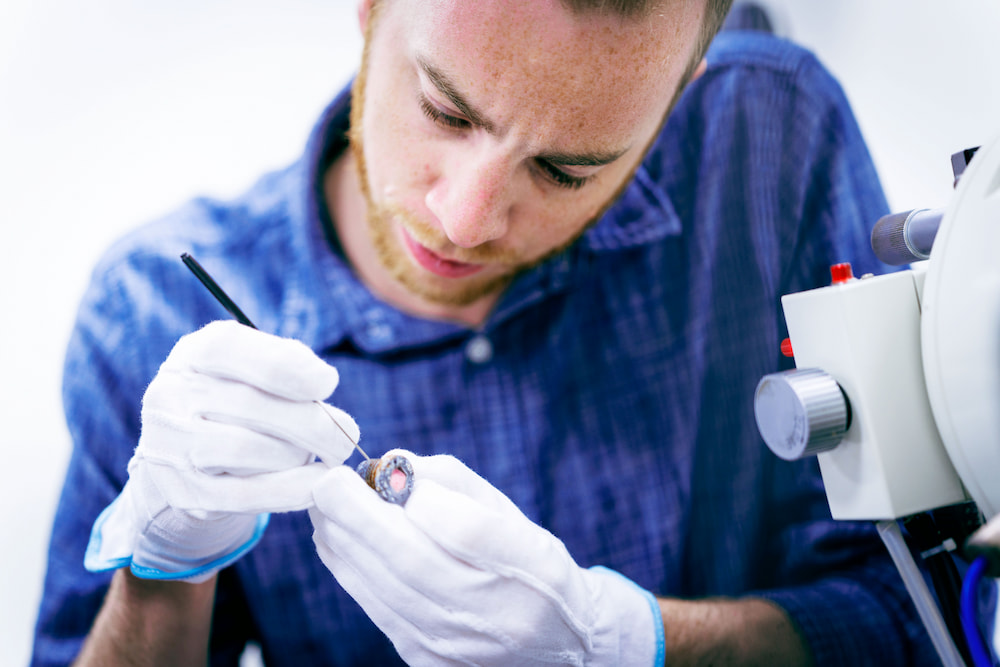Methods & requirements
Scania STD 4319
Corrosion testing determines the resistance of materials to corrosion under specific environmental conditions, like temperature and humidity. Other accelerating factors can be presence of chemicals and the pH-level of the salt fog and pluviometry.
There are mainly two different types of corrosion test standards, field performance and accelerated corrosion tests. Cotec Labs is focused on different types of standardized corrosion tests.
What is important when choosing a test method is to make sure the controlled environment matches the natural outside environment in terms of behaviour of the protective coating when it degrades. Since the methods used in a laboratory environment are accelerated, studies must underpin the extrapolation of test duration.

Accelerated corrosion testing by Scania STD4319, ACT 1
Scania STD4319 is a cyclic corrosion test used for vehicle parts. The method is developed by Scania for the purpose of assessing corrosion resistance of metals in environments influenced by chloride ions in the salt mist, in this case rain.
The standard Scania STD4319 describes an accelerated corrosion test procedure mainly suitable for testing the corrosion resistance of organic and inorganic coatings on ferrous substrates.
The method is called ACT or ACT1 which is an abbreviation of accelerated corrosion test, ACT version 1. Accelerated corrosion test is performed in test chambers where atmospheric corrosion conditions are simulated by using influence of chloride ions from a salt solution (NaCl) and variation in humidity and temperature in a controlled and standardized way.
Test procedure and assessment
Samples to be tested for corrosion resistance according to Scania STD4319 are tested in controlled climate chambers during a defined exposure time. The exposure time in the chamber is described by requirement standards and requirement level and depends amongst other on the surface treatment of the test samples.
The accelerated corrosion test is finished when the specified exposure time for the test samples is reached. Upon finishing of the corrosion testing the samples are evaluated for corrosion resistance. Several assessments are applicable: general corrosion, appearance (RA oxidation) and rust protection degree (Rp base metal corrosion) by ISO 10289, propagation from scribe and evaluation of edge corrosion.
Test cycle
During a corrosion resistance test according to Scania STD4319 the atmospheric corrosion conditions are accelerated using a cyclic corrosion test method in a controlled chamber.
The test cycles consist of controlled humidity and temperature cycling with application of salt by rain phase. One test cycle corresponds to one week of testing. The one-week test cycle is composed of two twelve-hour sub-cycles, where sub-cycle 1 consists of controlled humidity and temperature cycling, while sub-cycle 2 also contains the salt application by salt spray.
The variation in temperature is 35-45 degrees C and the relative humidity (humidity % RH) reaches from 50 to 90. The rain corresponds to pH 4,2 and 1% NaCl concentration.
Corrosion resistance requirements, STD4113 and STD4165
Corrosion resistance requirements for samples tested by Scania STD4319 are specified by requirement standards. The requirements depend on coating of the samples and the environment the samples are exposed to during position in the vehicle.
Example of requirement standards where accelerated corrosion testing by test method Scania STD4319 is required are
- Scania STD4111
- Scania STD4113 Scania
- Scania STD4165
A demand level for Scania can be described on the drawing as Scania STD4111-C3-PP pointing towards exposure by cyclic corrosion test STD4319 for 6 weeks. In other cases when inorganic coatings like ZnNi, Zn or Flake Coating Systems is used, Scania STD4111-B3-IF is verified in 4 weeks with the same accelerated corrosion test as per STD 4319.
Our most common corrosion tests
Talk to our corrosion test experts
Are you interested in conducting a test? Feel free to contact us – we’re here to assist you every step of the way.

Joakim Ekström

Erik Waltersson
Accredited by SWEDAC
and part of the international accreditation network ILAC

Methods and requirements
We offer a comprehensive and continuously expanding lab-scope of over 300 available test methods and standards.

Laboratory and equipment
Cotec Labs provides a 1200 sqm laboratory facility. Take a closer look at our laboratory
and equipment.

Quality and certificates
We are accredited by Swedac and part of the international accreditation network ILAC.


